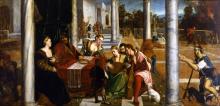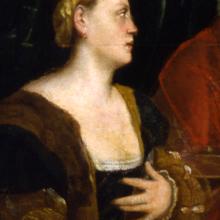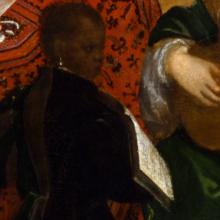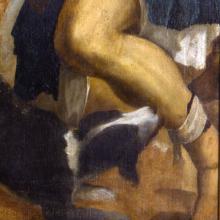The painting was recorded for the first time by Boschini in 1660 in the palazzo of the procurator Giulio Giustiniani (1624–1699) at San Stae on the Grand Canal, where it remained until the opening decades of the eighteenth century before being passed on to the Grimanis, in whose possession it appears in a 1763 engraving by Pietro Monaco. The discovery of the Bragadin family coat of arms in the banner behind the falconer in the middle distance following the 1992 restoration has led some to hypothesise that the work was commissioned by a member of the Bragadin family.
The episode depicted refers to the New Testament parable (Luke 16:19–31) of the rich man who refused succour to the beggar Lazarus, whose sores were licked by a dog. The subject became a pretext to admonish the rich for wasting their wealth and not dedicating themselves to public assistance, a pressing theme in the Venice of that period.
The painting, datable to about 1535–1540, is one of the artist’s most important. The description of life in a Venetian villa, which also reflects the local patricians’ tendency to retire to the country to escape the responsibilities of political administration, is extraordinary. The great attention dedicated to the description of the details of daily life according to an anecdotal taste is typical of Veronese’s work.



